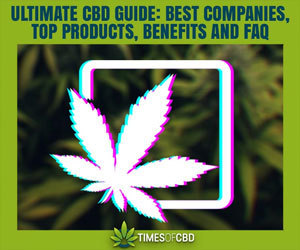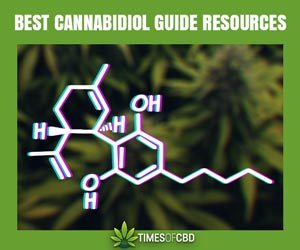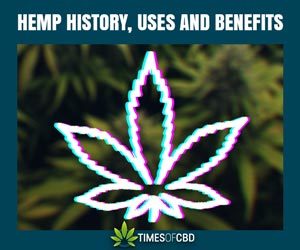CBD History: Discover the Historical Timeline of Cannabidiol’s Story
CBD History: Discover An Ever-Growing Timeline Story of Cannabis in the West
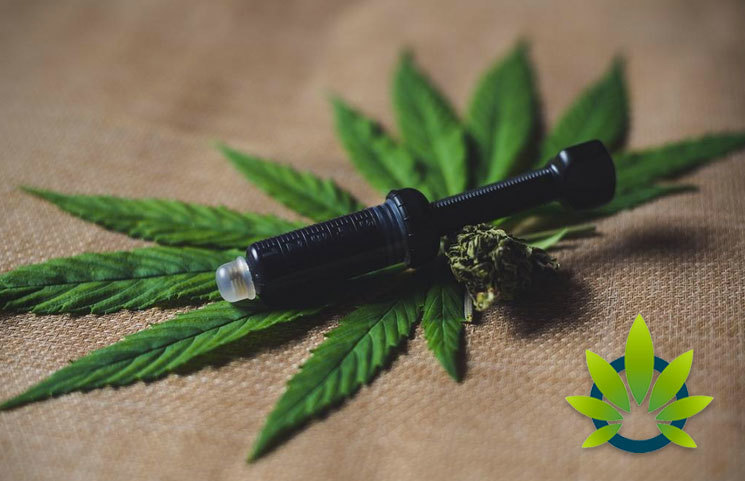
Even though it has been the subject of governmental hostility and present-day hesitation by institutional investors with its growing decriminalization, Cannabis and CBD remains a slightly repressed, if not booming industry.
Contents
Can we really justify calling it ‘booming'? Absolutely. At the time of this report, cannabis and more specifically the Cannabidiol (CBD) industry is rapidly emerging field in the health and fitness industries, readily being picked up by athletes and celebrities worldwide.
This comes with a pretty impressive price-tag, as well: According to a study by BDS Analytics, the CBD industry has the potential to carry a market value of over 20 billion dollars by 2024.
“We’re witnessing CBD maturing from a cannabis sub-category into a full-blown industry of its own,” said Roy Bingham, Co-Founder and CEO of BDS Analytics. “Our growth forecast for the CBD market, across all distribution channels, predicts a compound annual growth rate of 49 per cent by 2024. This is a great opportunity for all involved, but it means the road ahead will include decisions that need to be informed by the best possible data.”
With this meteoric growth taking place over the last few years, we tend to forget that it's actually been put to use by civilizations for thousands of years. There is plenty of historical and archaeological evidence to show that this is the case. One of the oldest evidence that we have comes from applications of hemp back in ancient Taiwan roughly 10 to 12,000 years ago.
While it's pretty easy for us to compartmentalize the applications of hemp and marijuana. One of the challenges that come with the study of CBD and the history of its use is finding out whether or not these same civilizations made use of hemp or marijuana.
One of the more realistic viewpoints to take is that these cultures probably made use of both. Ancient China, for example, made extensive use of hemp for ropes and clothing, but it's not certain whether they actually used Cannabis and CBD for its healing properties.
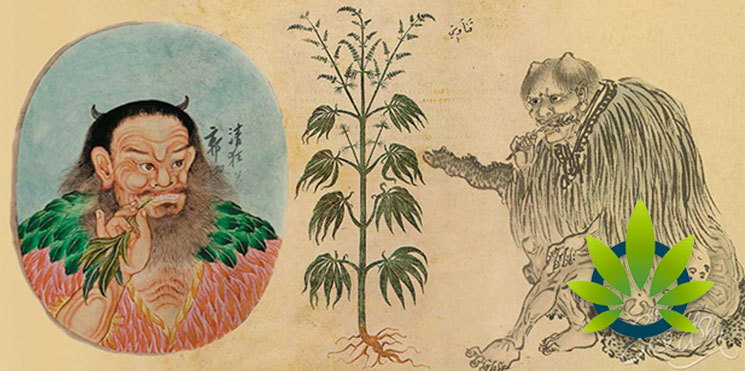
It's often thought by historical thinkers that the ancient emperors Fu Hsi and Shen Nung made use of marijuana as a medicinal solution between the 29-2700 BC. On the other hand, there is no proof that either of these emperors actually existed, let alone made use of weed or hemp for these purposes.
2000 to 1400 BC
According to a collection of Hindu texts discovered in India, which were written around 2000 to 1400BC, which are also commonly known as The Vedas, illustrate the highly psychoactive properties of ingesting cannabis. While this demonstrates the application of cannabis in an ancient society, it proves hard to distinguish whether this was an application of CBD or THC.
One of the conclusions that can be drawn is that both of these were frequently used by populations situated within the Middle East and Asia thousands of years ago at least. So while this accounts for just how commonly it was used in that region, what about its uses in the western hemisphere?
Europe And Cannabis – Hitting the Ground Running
16th Century BC
Some of the earliest evidence that we can find for the introduction and possible application of hemp and cannabis in Europe date back to the early 16th century BC, when it is believed to have been brought to regions of western and southern europe such as Germany, France and Greece. While this accounts for its introduction, there is little evidence to suggest that it was actively cultivated until the 9th century BC in Germany.
According to both archaeological evidence from digs in the Caucasus region (modern day Ukraine and Russia) and historical evidence from the likes of Herodotus of Halicarnassus, the tribal nomadic Scythians likely brought cannabis and hemp with them as they made contact with settled regions of eastern Europe and Greece.
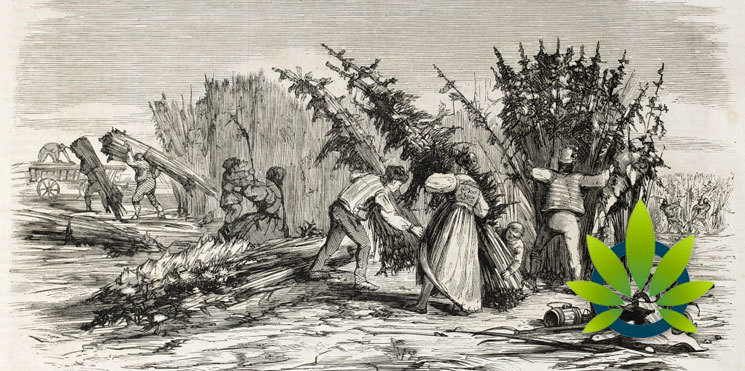
According to Herodotus, cannabis was commonly burnt using a chafing dish, allowing those members of the tribe in proximity to experience the psychoactive properties through inhaling the vapors. While modern-day scholars are skeptical (and rightfully so, on occasions) of Herodotus' work. Archaeological evidence has since emerged which proved this to actually be correct.
1940s
This is further substantiated by it being a commonly occurring habit among the more upwardly mobile Scythians. Digs during the 1940s found a couple buried with a leather pouch containing cannabis seeds, for example.
Another example of cannabis use that we've seen comes from interactions between the prominent eastern and western empires of the 2nd century BC, especially as the Roman Republic sought to stabilize the eastern Mediterranean in the aftermath of the Second Punic War. Roman legionaries certainly came into contact with hemp and some level of cannabis use during their involvement in a war with the Seleucids, especially as it came to a close with the Treaty of Apamea in 188BC.
This resulted in the surrender of cities and regions west of the Taros River, and the permanent garrison of soldiers and colonists in areas of western Anatolia. The Romans would hold imperium over this region for more than a thousand years. Therefore, it stands to reason that there must have been some application and engagement with cannabis and hemp.
Even before this, in the 3rd century BC, archaeological digs have uncovered the application of THC and CBD as a calming therapeutic solution for sailors by the Ancient republic of Carthage.
According to accounts provided by the Greek physician Pedanius Dioscorides during the first century AD, who worked as a medical physician for the Roman Army. Over his career, he traveled with a range of legions wherever they were garrisoned across the expansive empire. Over this time, he spent his time studying local plants, and in 70AD, he compiled and published what we know now as De Materia Medica (On Medical Matters).
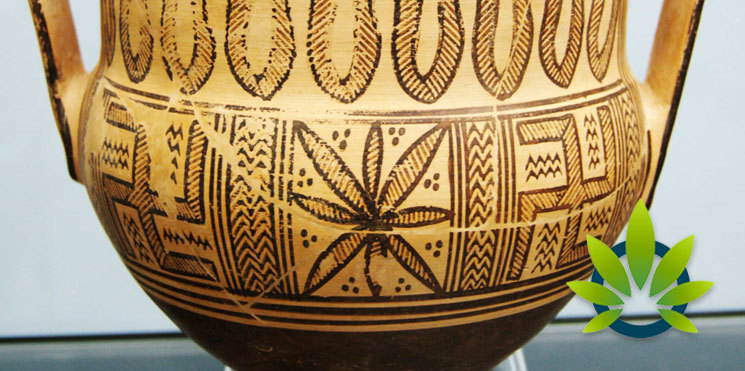
275AD
What makes this book particularly interesting is that it actually included details on both the male and female species of Cannabis plants. During his very brief reign of five years, actually attempted to obtain more money for the imperial revenues by levying a tax on cannabis coming from Egypt before his demise in 275AD.
While we get to see the origins and introduction of cannabis and hemp within the western hemisphere during the ancient and later antique periods of time. There is far less evidence on the medicinal applications of hemp and cannabis during the middle ages, however.
What is more commonly known is that seafaring nations and cities in Italy, Spain, the United Provinces (Netherlands) and England attempted to gain superiority over the oceans. As a result, they attempted to replace their falx sails with ones made from hemp. The reason being that sailors learned from unfortunate experiences involving continually replacing flax sails that would decay after a few months due to heavy winds and salt water.
By an impressive contrast, sails made out of hemp proved to be far more durable and, as a result, became on of the chose materials for ship-building. With this factor in mind, it's highly likely that this was also the material used in the development of triangular sails that provided greater ship mobility.
There isn’t much evidence of wide-scale use of hemp for its healing properties during the Middle Ages. As nations such as Italy, Spain, and England tried to expand their colonies, hemp was mainly used to replace flax sails. Through bitter experience, sailors learned that flax sails started rotting after about three months as the ocean’s salty water took a heavy toll.
1563
We also have some pretty interesting legislative proof of hemp cultivation during this period too. King Henry VIII set down a proclamation that his landed aristocracy set aside a quarter acre of their land for every 60 that they owned specifically for the cultivation of hemp. The previous example that we've had regarding its use for shipbuilding seems to be the underlying reason for this, as opposed to any medicinal use.
By 1563, Henry's successor – Queen Elizabeth I went further and introduced a £5 fine on those landowners that didn't comply with this policy.
One of the things that is interesting to note is the fact that there were suggestions by the South African Journal of Science that the 16th century playwright – William Shakespeare actually engaged in the use of hemp and/or marijuana. This is according to reviewed samples of the residue from tobacco pipes found in Shakespeare's home town. Researchers actually discovered trace elements of marijuana in eight of these samples, along with evidence that proves the use of nicotine and cocaine.
What is worth pointing out is the fact that even though Hemp / Cannabis was being cultivating in fluctuating volumes across Europe. These same plants carried low levels of THC relative to other continents, and were still commonly used in the field of medicine during the 1500s.
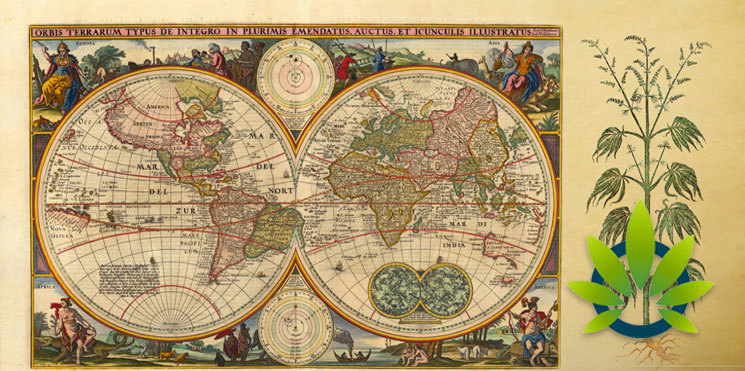
This application of THC and cannabis as a medicine is not as substantially backed up by evidence as we had previously seen from archaeological remains from 500 or so years ago, however. According to William Turner in his 1538 book ‘A New Herball' actually gave favorable reference to the use of the plant for its healing properties.
Along with sources like Turner, Pietro Andrea was one of the other standout names in the same century. Having wrote about the therapeutic benefits of using cannabis and Hemp. Fast forward over 100 years and we would find Nicholas Culpeper writing accounts of it in his work – A Physicall Directory back in 1649. Within this work, Culpeper discussed about how the plant, from its seeds, roots and leaves could be used to treat an extensive range of conditions ranging from Colic, Parasites, Gout, and even Jaundice.
Over Land and Sea – Cannabis in the New World/s
17th Century
Over the course of the 17th Century, especially as Britain rose to primacy on a continental and sea-faring scope, it took to cultivating hemp on a much larger scope. As a result, it can hardly come as a surprise to find that British colonists and expeditions to the Americas would bring some with them. With the arrival of settlers to the new colonies of Jamestown in Virginia in 1607, these same settlers would bring various farming tools with them, on account of some of the harsh lessons they learnt from settling in New England earlier.
One of the first laws that was passed by the newly established Virginia Assembly in London in 1619. It was during this assembly that it was decided that all colonists were under obligation to cultivate a certain amount of hemp and flax relative to the acres of land they owned.
Even with this in mind, it was a policy more due to the need for Hemp for its material purposes, especially with Jamestown being a port town at the time. Much like in previous centuries, there were a range of punishments and incentives in order to get hemp cultivation to take off. But it never really did.
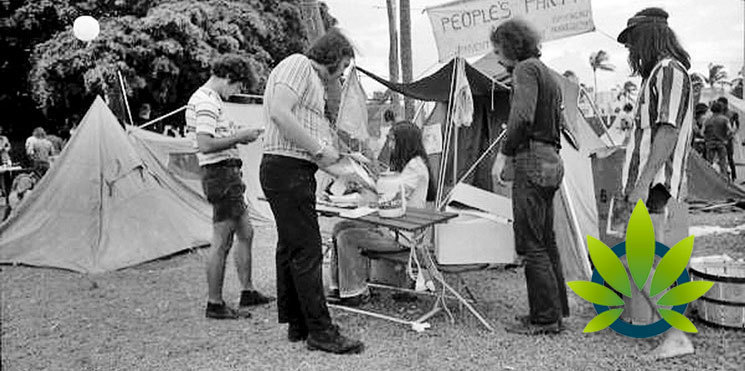
Even though it didn't become a widespread phenomenon during this time, it was still used in colonial America as a medium of medical treatment. Carl Linnaeus would end up giving the plant the name that we now more commonly know it as – ‘Cannabis Sativa' in 1753. Another 30 years into the future and another species of Cannabis which is more commonly known as ‘Indica' by Jean-Baptiste Lamarck.
According to some of the diary entries of Colonel / General George Washington between 1745 to 1775, he was actually involved in the cultivation of hemp to some scope within his plantation situated in Mount Vernon. While this would make for an interesting discussion over just how it was used, there are some pretty strong arguments against it being any kind of cannabis with high concentrations of THC, or just for material use. The farming diaries of individuals like Thomas Jefferson show that there were at least two founding fathers involved in Hemp cultivation during the latter decades of the 18th century.
19th Century
By the mid to late 19th century, the cultivation of hemp began to sluggishly decline as George Washington Carver introduced the Cotton Gin to the continent, allowing for more thorough cultivation of cotton, leading to massive exports of the material to Britain for processing, earning the rural south the nickname ‘King Cotton.'
During the Napoleonic Wars, within his Egyptian campaign, there were accounts of the Mameluk locals smoking seeds of hemp, along with creating a medicinal drink out of it. Even though it had a regional reputation as medicinal, the Emperor banned the use of it by his men.
By this point in time, Cannabis was still being used as a medicinal solution. During 1839, the researcher, William O'Shaughnessy published his research on the therapeutic effects of cannabis.
By 1842, he actually provided hashish to the pharmacist – Peter Squire, who actually created a tonic out of the sample, which actually included alcohol. With this, he actually patented it and titled it ‘Squire's Extract' which was officially sold across the European and American Continent. It's in this way that we can actually give Squires some credit for providing CBD / Cannabis Oil tincture to the continents.
The cannabis plant was actually broadly used for its medicinal qualities in both Europe and North America throughout the 19th century. According to some rumors, it was alleged that the empress of the British Empire – Queen Victoria, may have used the herb in order to treat some of her conditions. Some of the only evidence that exists for backing this up is from accounts from her personal physician – Sir Robert Russell, who wrote about the application of the herb, and wrote prolifically of its use for menstrual cramps.
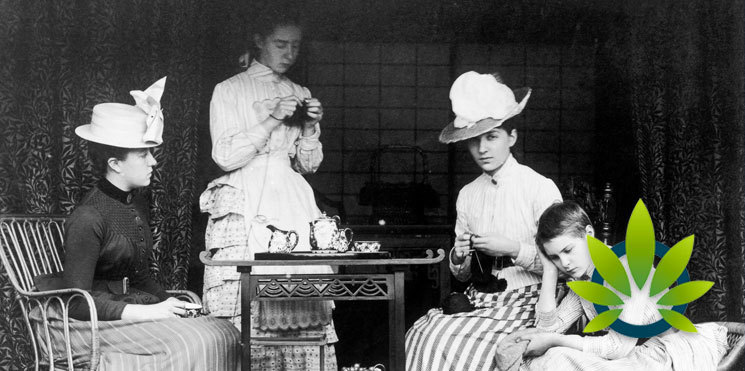
Coincidentally, Cannabis was actually featured in the United States' Third Edition of the Pharmacopoeia back in 1851. Both of these were actually quite popular among the public. This was until the beginning of more prejudicial policies instigated by Republican and Democratic parties in the United States. During the increasingly nativist rhetoric among politicians on the continent, these plants were demonized as being commonly used by undesirable illegal aliens such as Mexico and black Americans.
One of the first examples of this that we've seen from the US took the shape of the Marijuana Tax Act of 1937, which outlawed Cannabis and Hemp, making it illegal to sell, use and cultivate within the USA.
Over the next several decades, the United States would actually use this political power to further punitive policies against the use of cannabis. By the mid 20th century, both of these were effectively banned wholesale.
The Discovery of CBD
In spire of the fact that it was thoroughly used for a wide range of reasons over thousands of years across the world. There remains a substantial amount about hemp and cannabis that we still don't know about. In fact, the most recent discovery about an individual cannabinoid wasn't actually made until 1940. It was only at this time that Robert S. Cahn published his findings on the structure of Cannabinol (CBN).
A couple of years later, a chemist based in the US known as Roger Adams actually managed to isolate cannabidiol (CBD). This is one of the times that history was officially made as Adams officially isolated CBD for the very first time. It would be more than 20 years until THC would be effectively isolated too. And the accomplishment went to Dr. Raphael Mechoulam in 1963, when he identified CBD's stereochemistry, as well as THC in 1964.
While these make some of the breakthrough occurrences within the cannabis field. The Nixon administration took particular aim at the twin issues of late 60s radical activism and the prevalence of narcotics/ drug abuse. Thus resulting in the passage of the Controlled Substances Act of 1970, which made the possession of marijuana, hemp and other kinds of cannabinoids wholly illegal according to Federal Law.
The United States' war on drugs began the slugging match between the Federal government and its people, imposing disproportionately heavy prison sentences on those possessing even a small quantity of it. This illegalization made it far harder for any kind of further research to be done on individual cannabinoids and their uses.
While we tend to think of decriminalization as taking place in the late 20th / Early-21st century, Oregon actually got things started off back in 1973. Mechoulam capitalized on the fact that he was an Israeli citizen and, as a result, used it as a way to study the Cannabis plant where his American counterparts couldn't.
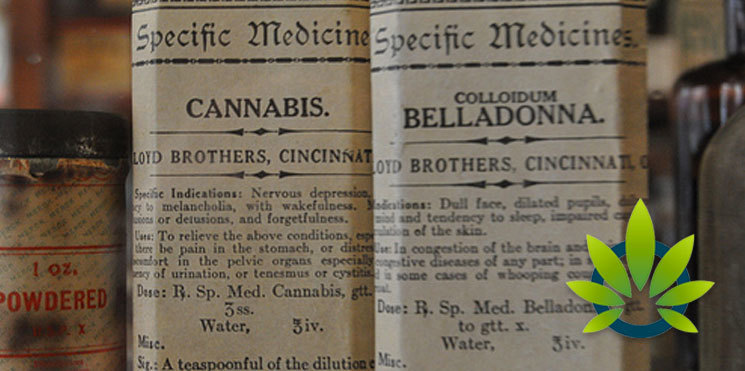
With a study conducted in 1978, he provided doses of 300 mgs of CBD on a daily basis for eight volunteers with medically diagnosed epilepsy. Within four months of these treatments, more than half of the group actually stopped having seizures, while the remainder saw a marked decrease in the amount of seizures that they had. It was a landmark piece of research.
One of the fundamental issues was the fact that, while this was groundbreaking, its legal status meant that it received very little coverage. It was during this same year that the state of New Mexico actually passed the Controlled Substances Therapeutic Research Act. Which effectively-recognized cannabis for limited medicinal use.
CBD As of Now
During the latter decades of the 20th century, Dr. Lisa Matsuda sought to discover the functions of cannabis, and actually uncovered the Endocannabinoid System (ECS). Interestingly, Dr Matsuda was the very first researcher to describe the underlying structure and function of CB1, which operates as a cannabinoid receptor. Meanwhile, the CBD2 receptor was discovered shortly therafter and a possible third receptor which is known as GPR55.
One of the biggest breakthroughs for the field of CBDs (and THC) occurred back in 1996, when the state of California became the very first state in the USA to legalize the medicinal applications of marijuana for patients. Over the next four years, an additional seven states would follow California's example. Since then, there have been more than 33 states, including Washington DC, that now permit the medical application of cannabis.
In addition to this number, 11 of these same states, including the District of Columbia, actually permit recreational use.
While there are an increasing number of states within the USA that actually make use of cannabis to some capacity, they still remain federally illegal. Back in 2006, Charlotte Figi was diagnosed with Dravet's syndrome, which is an extremely rare kind of epilepsy that causes hundreds of seizures on a weekly basis.
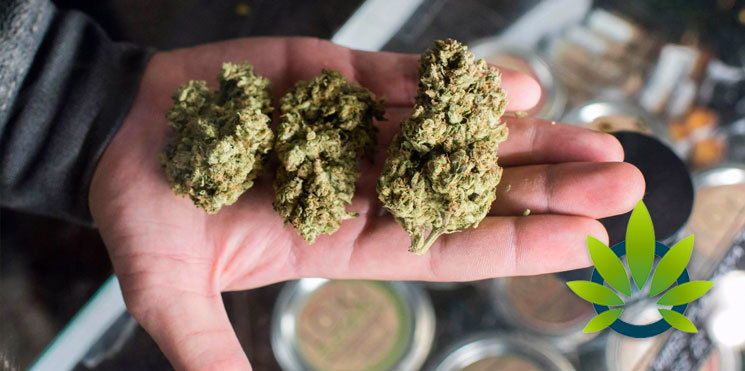
Even after trying a wide range of conventional medical solutions and procedures, Charlotte's parents resolved to try CBD when their daughter was aged five. To their shock, her number of seizures plummeted dramatically, to less than several per month.
One of the more recent reversals to this broad federal illegalization of cannabis came under the Trump administration with the passage of The Farm Bill of 2018, which allowed for the legal cultivation of industrial hemp within the United States.
The policy itself was a thinly veiled admission of the broad kind of utility that the plant has, including as an alternative medical solution. It was thanks to this policy that CBD became far more freely available across a wider range of states, with the exception of South Dakota and Nebraska.
CBD has actually become more legally used across a wide range of countries worldwide, all of which realize, to some extent, that there is some substantial value to the plant.
Cannabis And the History of CBD – The Final Thoughts
It has been centuries, but Cannabis and, more specifically – CBD – the latter of which is known as the more abundant non-intoxicating compound within marijuana, which actually contained in a large volume of hemp, and has since become a lot more commonly available for users.
Even with the short number of years that is has been around, it is growing at an extent never before seen from any kind of industry. And it's helped along by the passage of the new Farm bill, which operates as a federal seal of approval.
This meteoric growth in the CBD market makes it pretty easy for use to forget that it's still very much an industry in its infancy, with researchers barely scraping at the surface of the potential it possesses. While this makes it a pretty exciting prospect, medical experts express caution over the risks that coincide with an industry in its infancy. Specifically, the fact that these industries are still poorly regulated, making them a proverbial wild west for businesses and consumers.
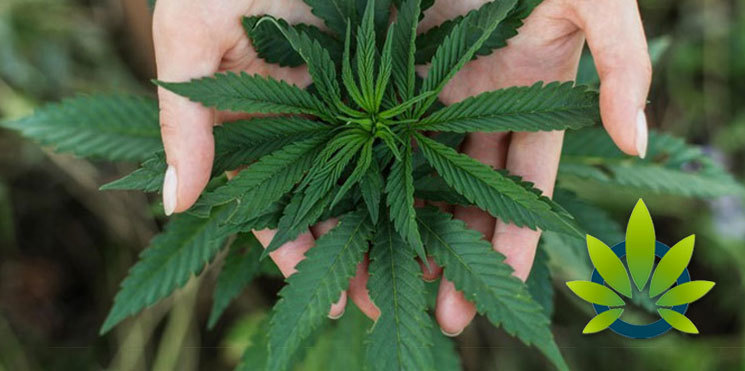
What this means is that it is pretty easy for users to buy CBD oils in various quantities online, with a number of stores selling it over the counter in a limited number of stores.
Until tighter legislation is introduced for businesses in the cannabis and CBD market, it is broadly and strongly recommended that you vet any and all CBD companies that you consider making use of.
One of the easiest ways for consumers to do this is by visiting the website – Marijuana Break to see if there are previous reviews of the company and its range of products. Research is still ongoing in the field of CBD and cannabis more broadly. But even then, it seems as though CBD oils may have some significant medicinal values for users; although it could simply work as one of the several cannabinoids in a collective solution referred to as the ‘Entourage effect.'


